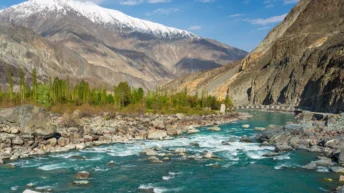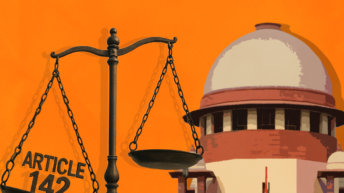
Today, on 16 December 2021, we commemorate the Golden Jubilee of Vijay Divas—the Liberation War. This is also a time to introspect and remember all those who fought for freedom and pay homage to those who laid down their lives and who were wounded in action in this war.
The perfidy of the West Pakistan dominated ruling elite in refusing to hand over power to Sheikh Mujibur Rahman after he had won the elections in 1970 was the final straw that led him to declare independence. And to suppress the surge in Bengali nationalism, the Pakistan military began the infamous ‘Operation Searchlight’ at the stroke of midnight on 25 March 1971, resulting in the worst genocide in modern times. Over the next nine months, the Pakistan military killed over three million Bengalis and raped over two million women.
Brutality, unfortunately, has been the lexicon of the Pakistan army, ever since Pakistan came into existence. It started with the rape and killing of innocents in Kashmir in October 1947 and then continued with the murder, abduction and rape of civilians in Balochistan during the first, second and third Baluch resistance movements in 1948, 1958 and 1962-1969 respectively. The US and the West maintained a quiescent silence, overlooking the barbarity of the Pakistan military, simply because Pakistan was, to them, a frontline state in the Cold War against the Soviet Union. The genocide of the hapless Bengalis was thus yet another display of Pakistan military brutality which was ingrained in the country’s psyche. They knew that they could get away while the outside world would remain a silent spectator, sacrificing human rights and dignity on the altar of political expediency. It is a sad fact of history that even after the defeat of the Pakistan military in 1971, the perpetrators of this genocide were not tried for crimes against humanity. That is why Pakistan continues to remain a troubled state and is mired in myriad insurgencies. The Pakistan military has never been held accountable for its actions.
Over ten million people crossed over to India as refugees and from among their ranks were formed the Mukti Bahini, raised and trained in India and from which rose a resistance movement. The Mukti Bahini constantly harassed the Pakistan military, leaving them no respite and forcing their units to disperse. By mid-November, the Indian Army was fighting alongside the Mukti Bahini, after receiving orders to capture weakly held BOPs and secure lodgement areas to establish the Bangladesh government on its soil to gain political credibility and mileage.
The Mukti Bahini’s initial operations along the border set the stage for the offensive operations of the Indian Armed Forces, which began on the night of 3-4 December 1971. Moving on four thrust lines against the Pakistani defence network which comprised three infantry divisions plus a large number of Wings of East Pakistan Rifles and West Pakistan Rangers, the operations culminated in 13 days with the surrender of the Pakistan military in Dhaka.
It was however the Eastern thrust from India’s IV Corps commanded by General Sagat Singh that made spectacular progress and broke the back of Pakistani resistance. On 9 December, 4 Guards had been lifted by MI-4 helicopters and dropped across the mighty Meghna River, South-West of Bhairab Bazar. Next day, as 4 Guards had secured the bridgehead across the Meghna, 19 Punjab and a battalion of the East Bengal Rifles, commanded by Lt Col Shafiullah, who later rose to be the Chief of the Bangladesh Army were ferried across the river. By 11 December, two more battalions, 18 Rajput and 10 Bihar had been airlifted by helicopters to Narsingdi. The road to Dhaka now lay open.
On 11 December, a 2 Para Battalion Group, taking off from the Dum Dum and Kalaikonda airfields, was para-dropped into Tangail, 70 miles North-West of Dhaka. The battalion captured Poongli Bridge and later that night set an ambush for the Pakistani troops retreating from Jamalpur, causing heavy casualties to the enemy. By 12th evening, a link up had been established by 95 Mountain Brigade of 101 Communication Zone Force (CZF), thus opening another corridor to Dhaka. On 14 December, the Indian Air Force mounted an attack on the Governor’s house, after Indian intelligence intercepted a message about a high-level meeting of the civil leadership, taking place there. While the meeting was in progress, four MiG 21 aircraft of 28 Squadron based in Guwahati fired their rockets which ripped through the massive roof of the main hall. The Governor, Mr AH Malik was shell-shocked and tendered his resignation with immediate effect. This proved to be the proverbial last straw that broke the camel’s back. On 15 December, 311 Brigade was close to Gulshan Model Town next to Dhaka Cantonment and 301 Brigade was in the area of Adamji Jute Mills in Narayanganj. 101 CZF was at Mirpur Bridge over the Bhuriganga River and early next morning was at Kurmitola. The Pakistani Army in Dhaka was now hemmed in from all sides and it was simply a matter of time and form, on how they would surrender.
The initial plans of Army Headquarters and of the Eastern Command did not envisage Dhaka as the terminal objective. It was General Sagat’s brilliance and strategic foresight which made him turn the direction of his thrust towards Dhaka as against his orders to advance towards Chittagong. His crossing of the Meghna on 9 December was a master stroke, and could well have led to the end of the war at that stage itself. Gavin Young, a British correspondent reported that General Niazi, soon after getting information of the crossing of the Meghna, informed Army HQ in Rawalpindi that he was no longer in a position to stop the Indian advance and asked them to arrange for a ceasefire. He was prepared to surrender on the 10th itself, but was given false hopes of American and Chinese intervention held out by Yahya Khan, and so he desisted.
Recently, two books on the Liberation War have been published, one by Mr Jairam Ramesh, a politician and the other by Mr Chandrashekhar Dasgupta, a retired diplomat, both questioning the narrative put forth by Field Marshal Sam Manekshaw that the then Prime Minister, Smt Indira Gandhi, delayed the start of the war from April-May to December, based on his advice. It is likely that Indira Gandhi had received advice on the timing of the war from many quarters, and not only from the Army Chief. But it was the Chief’s advice which would have been binding. Politicians do not set dates for military operations without military advice as that is a sure recipe for disaster and Indira Gandhi was much too shrewd a person to fight a war which could be lost. She would have listened to advice from her Chief. A needless controversy really to undermine an iconic Army Chief, but such barbs cannot dent the image of the Field Marshal.
In the final analysis, the Liberation War was a victory for humanity, won by the combined efforts of the Indian Armed Forces, the Mukti Bahini and the people of Bangladesh. With the surrender of the Pakistan armed forces, an era of unprecedented brutality committed by the Pakistan military came to an end. Today, as we commemorate the Golden Jubilee of the Liberation War, let us also build on this spirit of cooperation to make the region a safer and better place for the people of the two countries and also for the region.






Add comment